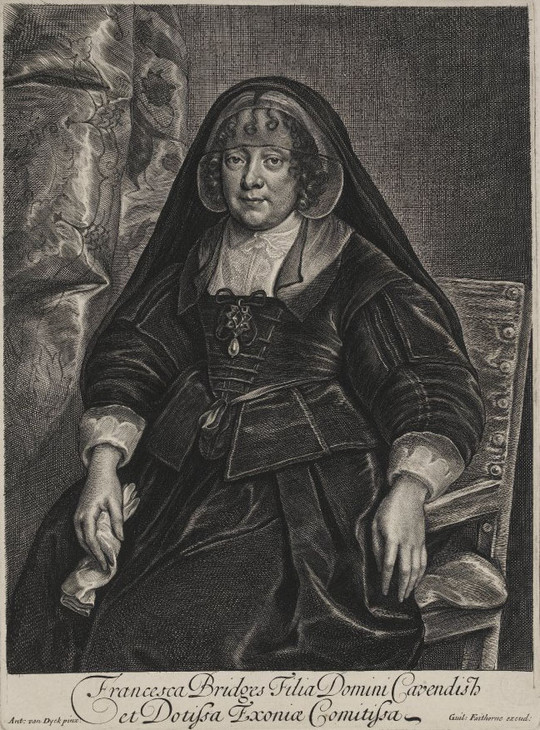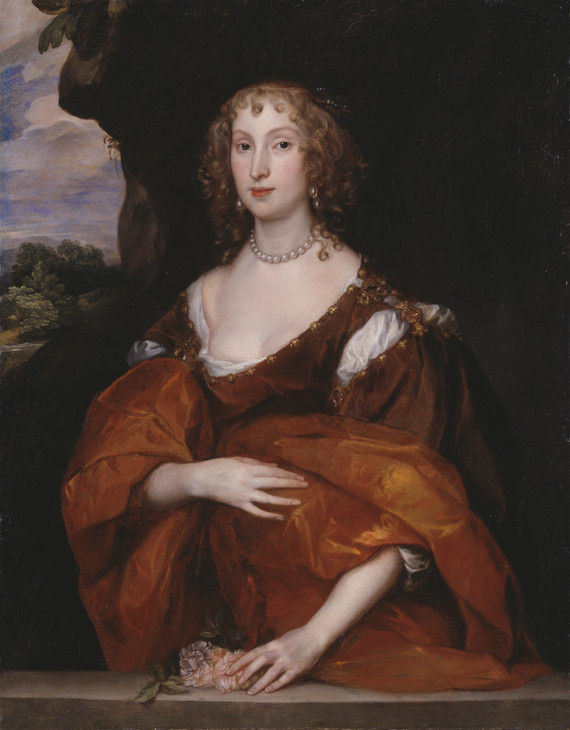Sublime Portraiture: Jonathan Richardson’s Portrait of the Artist’s Son, Jonathan Richardson Junior, in his Study and Anthony van Dyck’s Portrait of Mary Hill, Lady Killigrew
Lydia Hamlett and Helena Bonett
Portraiture was a ‘sublime’ genre, according to the early eighteenth-century artist and writer Jonathan Richardson, because its composition had the power to affect the spectator in their thoughts and even move them to action. Richardson was influenced in this by the theories of the classical author the Pseudo-Longinus, who wrote in a similar way about the composition of language and personal charisma in his treatise Peri Hypsous (‘On Height’, later translated as ‘On the Sublime’). While earlier English theorists had emphasised the capacity of a portrait to express the greatness of the sitter’s mind, Richardson went a step further and highlighted the ability of the artist to affect the mind of the spectator with the painted likenesses.
Richardson knew the ancient text by Pseudo-Longinus well and drew upon it heavily in many of his theories about art, not just portraiture. For example, like Pseudo-Longinus, Richardson says that the painter should aim to capture the sublime and accept imperfection as part of this, highlighting the importance of surprising and not merely pleasing. Elsewhere he draws upon the idea that simplicity itself can be effective and sublime, not only in language but also in art. As the artworks and artists that he offers as examples are wide-ranging they are often used to demonstrate how difficult it was to define a visual sublime in the early eighteenth century. In the first edition of An Essay on the Theory of Painting (1715) Richardson proposes the art of Michelangelo as being sublime; in the second edition ten years later he offers Raphael. He gives as further examples works by Van Dyck, Rembrandt and the Italian Baroque artist Federico Zuccaro. Scholars have used this apparent confusion to show how the sublime could not be relevant to art of the period. But it is precisely through the diversity of Richardson’s case studies that we can understand far more what the sublime meant at the time, as what all his examples have in common is the composition’s strong effect on the viewer and the interaction between sitter and spectator.
In his Two Discourses (1719), Richardson set out a scheme whereby he believed that any person could judge whether a painting was sublime. He stated:
All the different degrees of goodness in Painting may be reduced to these three general classes. The mediocre, or indifferently good, the excellent, and the sublime. The first is of a large extent; the second much narrower; and the last still more so ... the sublime therefore must be marvellous, and surprising, it must strike vehemently upon the mind, and fill, and captivate it irresistibly.1
He argued that sublime works could only be found in the categories of history and portrait painting and that in order to be sublime these paintings ‘must excel in grace, and greatness, invention, or expression’.2
But how could sublimity be judged? Inspired by the French theorist Roger de Piles, Richardson created a scale in which the viewer could award points from zero to eighteen for everything from composition, drawing and colouring to invention, grace and greatness. As he wrote:
I will keep to the number eighteen, to denote the highest degree of excellence, and that, and the preceding one shall stand for the sublime in those parts of Painting that are capable of it. Sixteen, fifteen, fourteen, thirteen, shall denote excellence in these four degrees, as from twelve to five inclusive shall signify the mediocre: and though bad pictures are not worth our notice, good ones may be bad in some particulars, I will therefore reserve the other four numbers to express that.3
What purpose could it serve to award points to a painting in this way? Richardson went on to explain:
The use to be made of this scale is this: a little pocket-book might be always ready, every leaf of which should be prepared, as shall be seen presently, and when one considers a picture, an estimate might be made of it, by putting such figures under each head as shall be judged proper.4
He also argued that by practising this system the viewer would get ‘a more clear, and distinct idea’ of the painting, and would be encouraged to ‘exercise’ their ‘judgment’. The jottings would also serve as a ‘remembrance’, and when viewing the painting together with the notes again in ‘months or years afterwards’, the viewer ‘will see whether his judgment is altered, and wherein’.5
Richardson singled out a portrait of Frances Cecil, Countess Dowager of Exeter by Sir Anthony van Dyck – a lost painting which he knew from a print in his own collection – as a case study of sublimity (fig.1). In a method indirectly derived from Pseudo-Longinus, who claimed that it was not absolute perfection but the superlative qualities of certain elements which led to the sublime, Richardson showed that even if all the elements of an artwork did not score top marks, if some were deemed truly excellent that was enough to make it ‘sublime’. Richardson claimed that the portrait of Frances Cecil inspired the spectator to behave in a more moral way. He said that the sitter’s dress and demeanour, as well the calm sorrow expressed in her eyes, were entirely appropriate for a grieving wife and would therefore cause the spectator to want to emulate her dignity. The fact that Van Dyck hides the sitter’s lack of eyebrows with a veil, for example, was thought by Richardson to add grace to the composition.

William Faithorne after Anthony van Dyck
Francesca Bridges Filia Domini Cavendish bet Dotissa Exoniae Comitissa, 1650-63 1650–1663
Engraving on paper
© The Trustees of the British Museum
Fig.1
William Faithorne after Anthony van Dyck
Francesca Bridges Filia Domini Cavendish bet Dotissa Exoniae Comitissa, 1650-63 1650–1663
© The Trustees of the British Museum

Jonathan Richardson 1667–1745
Portrait of the Artist's Son, Jonathan Richardson the Younger, in his Study c. 1734
Oil paint on canvas on board
support: 904 x 715 mm
Tate T13207
Presented by Tate Patrons 2010
Fig.2
Jonathan Richardson
Portrait of the Artist's Son, Jonathan Richardson the Younger, in his Study c. 1734
Tate T13207

Sir Anthony Van Dyck 1599–1641
Portrait of Mary Hill, Lady Killigrew 1638
Oil on canvas
support: 1065 x 833 mm; frame: 1274 x 1039 x 85 mm
Tate T07956
Purchased with assistance from the Art Fund, Tate Members and the bequest of Alice Cooper Creed 2003
Fig.3
Sir Anthony Van Dyck
Portrait of Mary Hill, Lady Killigrew 1638
Tate T07956
Richardson studied works in his collection in the context of sublime theory. It was the way in which he evaluated their composition and the effect this had on the spectator that he considered important. In Tate’s collection there are three portraits by Van Dyck which would have provided ideal studies for him: A Lady of the Spencer Family c.1633–8 (T02139), Portrait of Sir William Killigrew 1638 (T07896) and Portrait of Mary Hill, Lady Killigrew 1638 (T07956, fig.3). Like the portrait of Frances Cecil, the latter is a half-length portrait of a woman; but it is very different in its effect. It shows a youthful woman standing in a landscape, clothed in luxuriant red robes with uncovered hair, clutching pink roses in her left hand. It was designed to hang alongside the companion portrait of the sitter’s husband Sir William Killigrew.
Notes
Lydia Hamlett was Research Assistant (The Sublime Object: Nature, Art and Language), Tate.
Helena Bonett was Research Coordinator (The Sublime Object: Nature, Art and Language), Tate.
How to cite
Lydia Hamlett and Helena Bonett, ‘Sublime Portraiture: Jonathan Richardson’s Portrait of the Artist’s Son, Jonathan Richardson Junior, in his Study and Anthony van Dyck’s Portrait of Mary Hill, Lady Killigrew ’, in Nigel Llewellyn and Christine Riding (eds.), The Art of the Sublime, Tate Research Publication, January 2013, https://www
